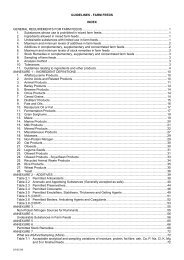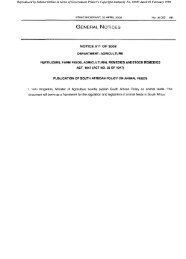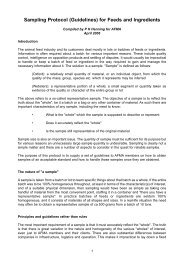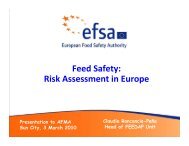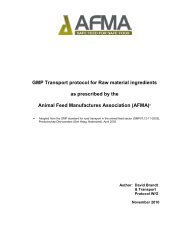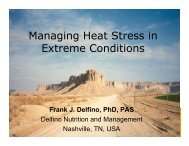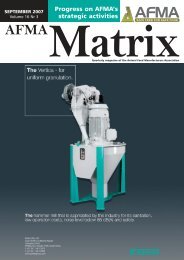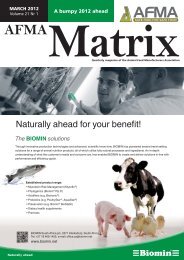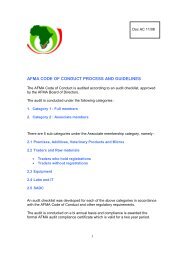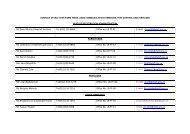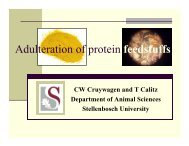Create successful ePaper yourself
Turn your PDF publications into a flip-book with our unique Google optimized e-Paper software.
Control of E. coli, Salmonella<br />
and other potential pathogens<br />
By Dr Peter Theobald, Addcon Europe GmbH, Germany<br />
Contamination of animals with<br />
pathogenic bacteria creates<br />
enormous social and economic<br />
costs worldwide. The annual<br />
costs of Salmonella alone to the<br />
UK economy are more than 46 million British<br />
pounds, with estimated 2,8 billion euro<br />
losses across the European Union (World<br />
Health Organisation, 2005). New management<br />
and dietary strategies to counteract<br />
intestinal pathogens in animal production<br />
are therefore of great interest.<br />
Preventing the spread of E. coli and Salmonella<br />
to the consumer requires special<br />
control measures during slaughter and<br />
processing. Improving gut health has been<br />
shown to be effective against intestinal<br />
pathogens (Eidelsburger et al., 1992). While<br />
biosecurity and hygiene in the feed mill and<br />
on the farm are essential, the acidification of<br />
feed ingredients or finished feeds with organic<br />
acids also offers considerable benefits<br />
in E. coli and Salmonella control.<br />
Feed acidification is not only effective<br />
within the feed – possibly its biggest benefit<br />
occurs within the pig itself. In different European<br />
case studies diformates have proven<br />
their high effectiveness to decrease potential<br />
pathogens in monogastric farm animals.<br />
Literature review<br />
The positive effect of organic acids and their<br />
salts in preserving feed from microbial and<br />
fungal destruction is known for decades.<br />
Also, the positive effect on improved buffering<br />
capacity of the diet with an increased<br />
digestibility of nutrients, especially protein<br />
digestibility and thereby reducing pathogen<br />
colonisation, is often described (Eidelsburger<br />
et al., 1992; Kirchgessner et al., 1992;<br />
Eidelsburger & Kirchgessner, 1994; Freitag,<br />
2007).<br />
Strauss and Hayler (2001) showed under<br />
in vitro conditions the strong antibacterial<br />
effects for formic acid, in comparison to<br />
propionic and lactic acids. Considering the<br />
mode of action of organic acids, it is a precondition<br />
to have contact between the acid<br />
Table 1: The effect of different types of feed additives in weaners<br />
Parameter Control K-diformate (KDF)<br />
(1,2%)<br />
Colistin<br />
(120 ppm)<br />
ZnO<br />
(2500 ppm)<br />
Feed intake (g/day) 760 787 791 778<br />
Weight gain (g/day) 543ab 565a 565a 537b<br />
FCR# 1,40a 1,40a 1,40a 1,45b<br />
Diarrhoea (%) 39,6a 0,7b 14,6c 12,5c<br />
Means in rows bearing unlike superscripts differ significantly (P



